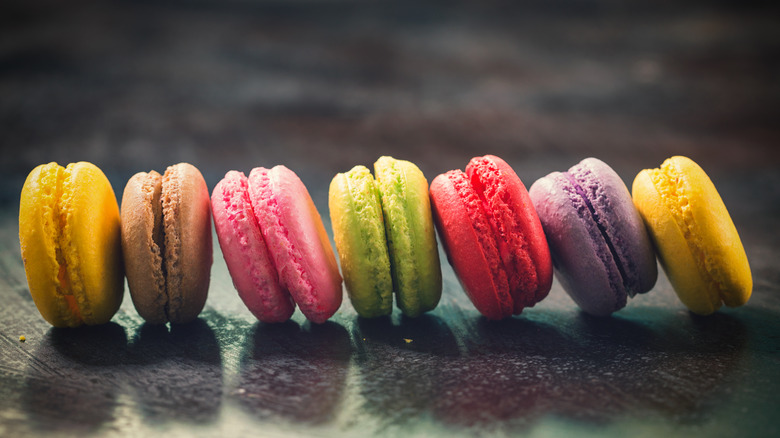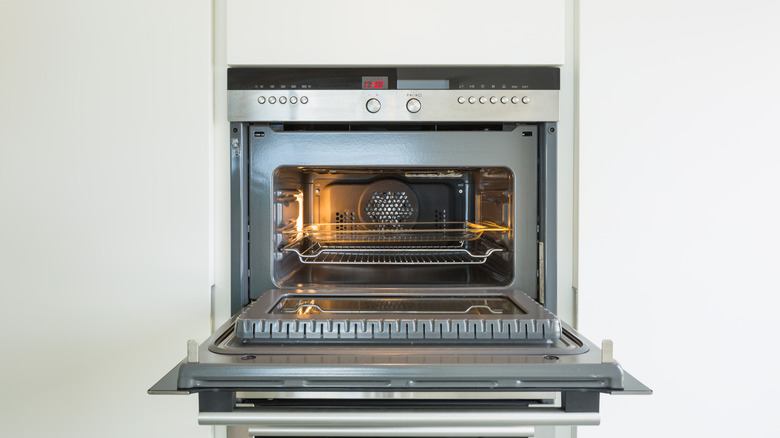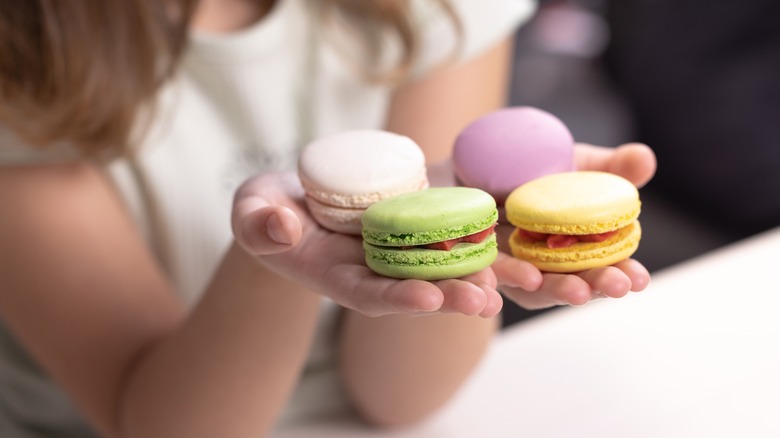Why Homemade Macarons And Convection Ovens Aren't Friends
Convection ovens are a modern miracle. They can cook your dinner in three-quarters of the time it would take with a conventional oven, ensuring even baking times when cooking various items on different racks without the need to switch them out halfway through.
Convection ovens achieve this feat by circulating air so that food cooks quickly and evenly. A fan, typically located near one of the heating elements in the convection oven, blows hot air around, making quick work of items that taste better crispy, such as roast chicken, sheet pan dinners, or your grandma's famous casserole.
However, it's important to remember that convection ovens aren't well-suited for every dish. Because they channel hot air to aggressively target your food, they aren't ideal for more delicate items that might crumble under the pressure. In particular, French-style macarons are some of the worst things you could ever put in your convection oven.
Why convection ovens are bad for macarons
Baking macarons is a famously tricky endeavor. These delicate French-style cookies are made from a baked meringue mixed with almond flour, and even if you follow your recipe to the letter, your macarons could still come out flat and misshapen, or brittle and unpleasant.
Macarons are extremely sensitive to the quality of the air around them. After all, a meringue is largely composed of air, transforming clear egg whites into a fluffy white cloud. The ideal climate for baking macarons is one with still, dry air. Humid conditions are detrimental to these cookies, and can make them sticky and deflated, which is why it's recommended to avoid baking them on rainy days. But moving air, regardless of how dry it is, can be just as harmful. The blowing air of a convection oven may damage your macarons and cause them to crack or disintegrate. And since convection ovens tend to run hotter than standard ovens, they can also burn or dry out your macarons. (Macarons are generally baked at a low heat, no higher than 300 degrees Fahrenheit.)
You can use a convection oven with trial and error
That's not to say that baking macarons in a convection oven is absolutely impossible, though. Perhaps that's the only type of oven you have access to. In that case, it would be a good idea to test small batches of macarons to see how they react to your specific oven. You may have to adjust your recipe for convention oven cooking by baking the cookies at a lower temperature (around 25 degrees Fahrenheit lower) to counteract the naturally higher temperature of a convection oven, unless your oven has the capability to self-correct for the temperature difference, as some do.
You might also want to experiment with baking your macarons on different racks in your oven. When utilized correctly, a convection oven has the potential to bake macarons with thick, crispy shells and tall pièds, or feet (the little ruffles at the bottom of each cookie that add to their aesthetic appeal). However, you might need to experiment a little to achieve the desired result.



